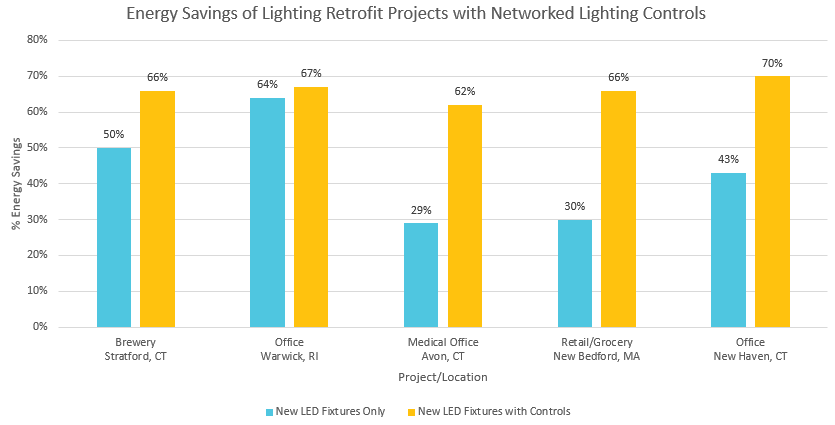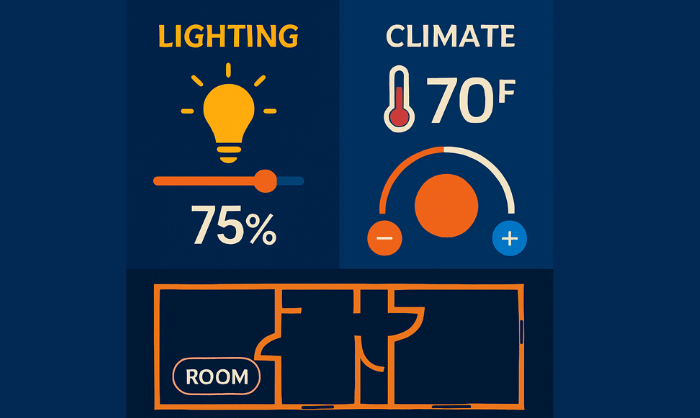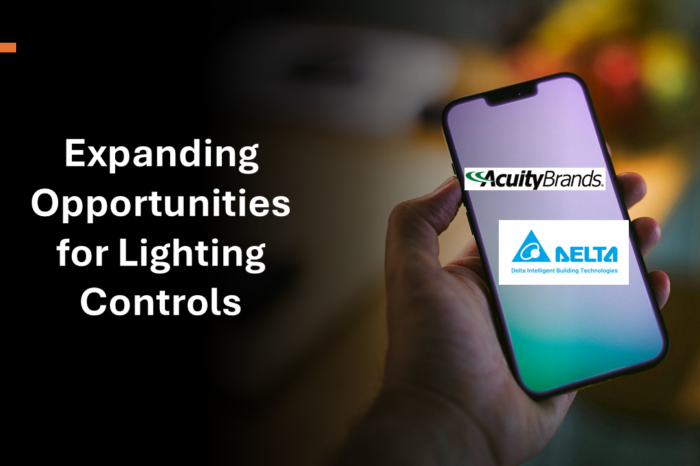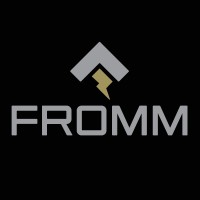Getting More from Networked Lighting Controls
This years LightFair featured controls, controls and even more controls. The benefit of these controls is realized when they are networked, however, adoption in this segment has been slow due to concerns relating to complexity, understanding, installation, cybersecurity, energy monitoring, interoperability and more. Additionally, the sales process, and buying influences, are frequently difference.
Gabe Arnold, the Technical Director for DesignLights Consortium (DLC) shared insights on networked lighting controls and how DLC is seeking to make this technology more beneficial:
“Sometimes a technology comes along that legitimately qualifies as a “game-changer”. Light emitting diode (LED) technology, with its immensely superior energy efficiency and longevity profile, easily cleared the game-changer bar when it arrived on the scene about a decade ago, quickly eclipsing fluorescent as the efficient lighting option of choice.
Fast forward to today, and a related technology with largely untapped potential could be the next silver bullet. A new DesignLights Consortium (DLC) policy seeks to strengthen the value of this technology – networked lighting controls (NLC) – while addressing issues critical to greater market acceptance. After revisions reflecting two rounds of stakeholder comments, the DLC’s Networked Lighting Control System Technical Requirements V4.0 took effect June 10. It features important updates related to cybersecurity, energy monitoring, and more.
NLCs Generate Savings
When installed simultaneously with LEDs, NLCs can boost the energy efficiency of LED-alone projects by up to 47 percent, according to a 2018 DLC study. With energy use the single biggest operating expense for the nation’s commercial office buildings (accounting for about a third of typical operating budgets, according to the Energy Star program) and the US Energy Information Administration reporting that 17 percent of electricity consumed in the nation’s buildings powers lighting, the value proposition of NLCs for building owners and managers is significant. And on top of energy savings, networked systems can create a foundation for smart buildings in which individual fixtures or zones easily adjust for changing conditions and space usage or track data useful for non-energy purposes such as occupant safety, convenience and comfort.
Yet, NLCs have been stubborn to catch on due to an array of issues, from inadequate awareness and understanding among installers and end-users, to worries related to vulnerability to hackers and whether various devices and systems can seamlessly exchange data and work well together.
First introduced in 2016, the DLC’s NLC specification covers a range of capabilities for networked systems. These capabilities are either “required” or must be “reported” by manufacturers desiring to get their products listed on the DLC’s Qualified Products List (QPL), a roster of vetted products on which approximately 50 electric utilities across North America base their commercial and industrial energy efficiency rebate programs. The DLC revises its NLC Technical Requirements annually to keep up with evolving technology and standards.
Cybersecurity and Energy Monitoring
This year’s update hones in on two areas: cybersecurity and energy monitoring. In addition, the specification introduces building energy management systems (BEMS) that control networked lighting (as well as other building systems such as HVAC) as eligible for qualification and listing on the NLC QPL.
As with other aspects of the new policy, the increased emphasis on cybersecurity is meant to expand adoption of NLCs by providing a greater level of comfort with the technology. V4.0 includes a plan to ensure that DLC-qualified systems utilize best practices to defend against malicious attacks.
According to a 2018 report by the Center for Strategic and International Studies (CSIS), cybercrime costs companies and individuals nearly $600 billion annually worldwide and poorly-protected Internet of Things (IoT) devices are particularly problematic. The DLC’s V4.0 requirements establish criteria for acceptable cybersecurity standards, and NLC systems must certify utilization of one or more of these standards in the past two years in order to claim “cybersecurity capability”. While this capability is optional this year, the DLC intends to make it required for listing on the QPL in 2020. By requiring qualified NLCs to adhere to best practices aimed at staying a step ahead of hackers, the DLC aims to buttress utility support, encouraging more robust incentives for installing the technology with LEDs.
Unlike cybersecurity, the DLC’s other main NLC focus this year – energy monitoring – is a required capability under the new Technical Requirements. By instilling NLCs with the ability to report energy consumption by single or groups of luminaires, energy monitoring can inform the design of utility efficiency programs, educate end-users on product effectiveness, and hold manufacturers accountable for their energy efficiency claims. Providing manufacturers and facility owners and managers with ongoing feedback is another way the DLC intends to speed the adoption and energy savings potential of NLCs, as well as expanding the non-energy “smart building” benefits facility managers can reap through this under-utilized technology.
According to Energy Star, “studies have found that superior energy performance contributes to increased employee productivity and health.” With the ability to integrate with other building systems, NLCs are a gateway to more intelligent use of building space, increased personal control and comfort, and better building diagnostics. Through NLCs, for example, building managers can receive daily diagnostic reports about lights that are out or in need of attention, and can easily reconfigure lighting controls in response to changes in the space or to address complaints.
Interoperability
Finally, the new Networked Lighting Controls Technical Requirements introduce interoperability as an important asset manufacturers will need to focus on going forward, although it is not yet a required capability of qualified NLC systems. The DLC defines interoperability as “the ability of systems or systems components to transmit, receive, interpret, and/or react to data and/or power and function in a defined and appropriate manner.” In plain terms, this allows various systems and components to work together to unlock new energy savings. The DLC plans to continue researching and developing a multi-year plan that will be included in the 2020 Technical Requirements.
In short, the combined benefits of NLC technology are a game-changer, capable of not only saving money and combating climate change (commercial lighting accounts for about 6 percent of annual greenhouse gas emissions worldwide), but also eliminating myriad headaches for facility managers seeking to maximize the comfort and functionality of company work spaces.
By addressing roadblocks to wider acceptance, the DLC’s new Networked Lighting Control System Technical Requirements V4.0 promises to speed this important market transformation.”
As systems get better and expectations of our technology and systems continue to evolve, networked lighting controls will be expected. While we may be on the cutting edge of NLCs, they will quickly become a “customer” expectation. Knowing which systems to recommend will be important and, as we see in the consumer space, a few will become “recognized” from a brand viewpoint, some may be technically superior and there may be some “niche” products. The question becomes, which will become mainstream … supported by a “brand” (marketing), training, features and more while addressing the concerns that DLC is helping formalize into standards.
And don’t forget our Q2 Pulse of Lighting survey. Need your input by Friday, June 21. Respondents receive a free copy of the report.

























